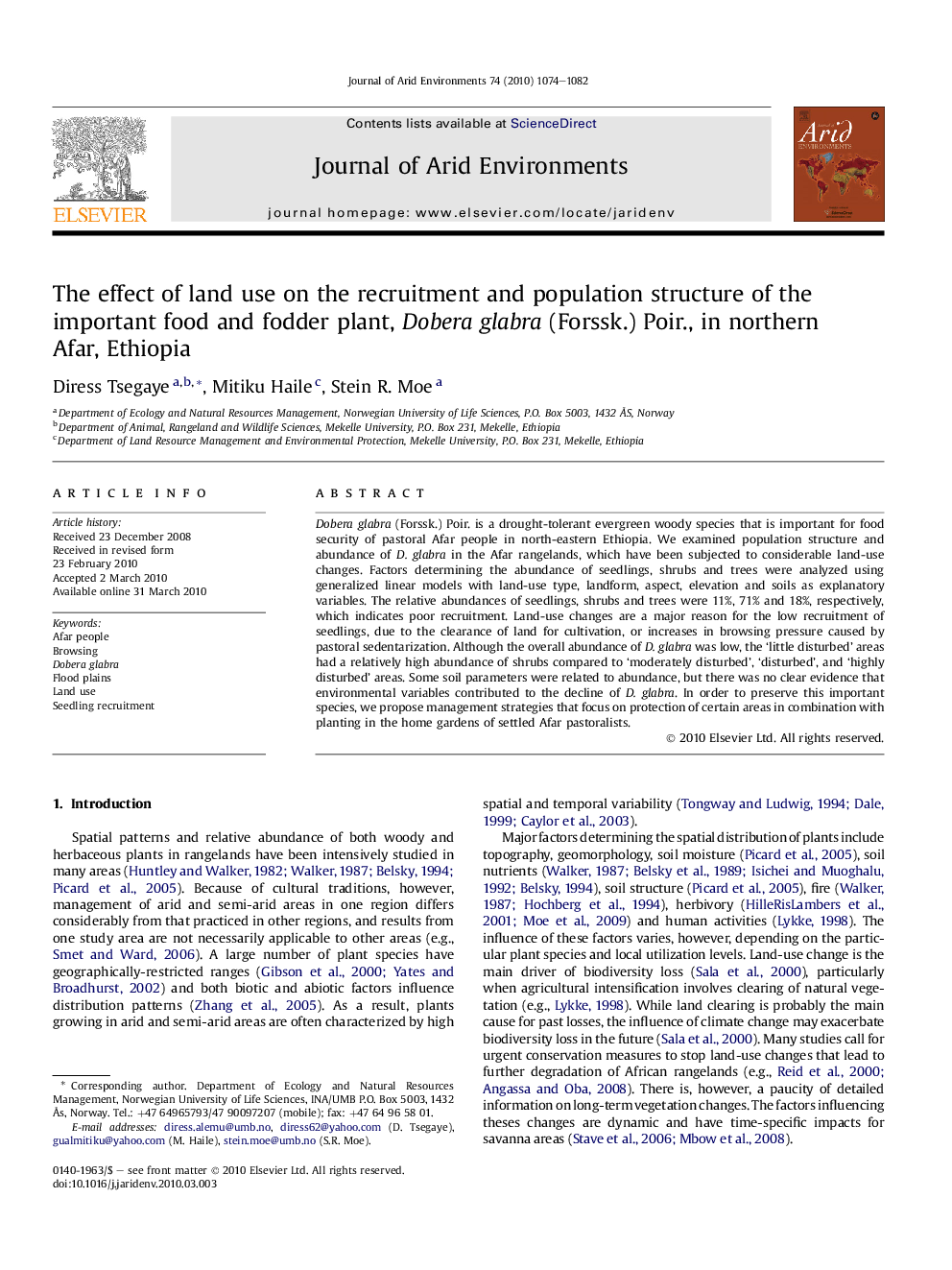| Article ID | Journal | Published Year | Pages | File Type |
|---|---|---|---|---|
| 4393805 | Journal of Arid Environments | 2010 | 9 Pages |
Dobera glabra (Forssk.) Poir. is a drought-tolerant evergreen woody species that is important for food security of pastoral Afar people in north-eastern Ethiopia. We examined population structure and abundance of D. glabra in the Afar rangelands, which have been subjected to considerable land-use changes. Factors determining the abundance of seedlings, shrubs and trees were analyzed using generalized linear models with land-use type, landform, aspect, elevation and soils as explanatory variables. The relative abundances of seedlings, shrubs and trees were 11%, 71% and 18%, respectively, which indicates poor recruitment. Land-use changes are a major reason for the low recruitment of seedlings, due to the clearance of land for cultivation, or increases in browsing pressure caused by pastoral sedentarization. Although the overall abundance of D. glabra was low, the ‘little disturbed’ areas had a relatively high abundance of shrubs compared to ‘moderately disturbed’, ‘disturbed’, and ‘highly disturbed’ areas. Some soil parameters were related to abundance, but there was no clear evidence that environmental variables contributed to the decline of D. glabra. In order to preserve this important species, we propose management strategies that focus on protection of certain areas in combination with planting in the home gardens of settled Afar pastoralists.
